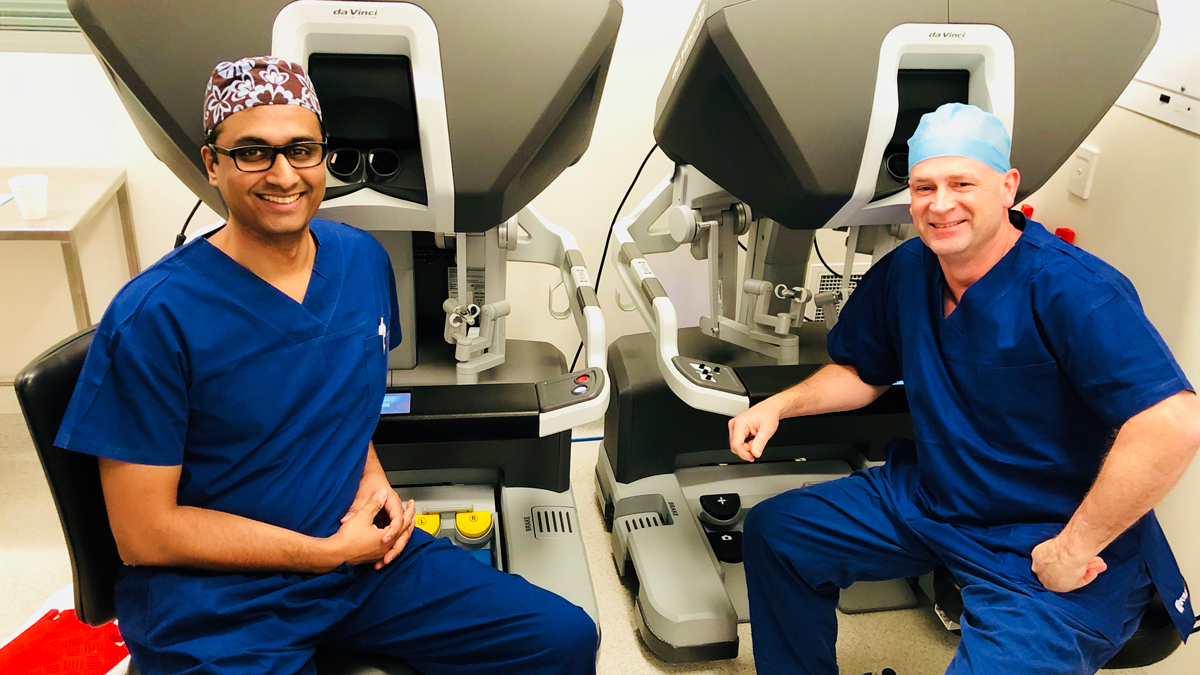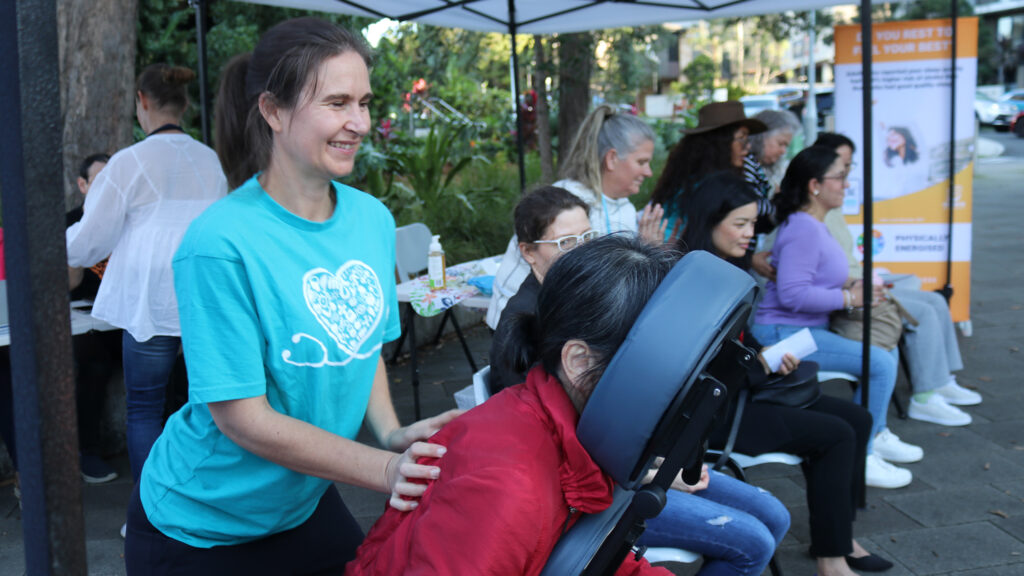In a first for Sydney Adventist Hospital, a complex dual console gynaecological operation using the state-of-the-art da Vinci robot has been performed with both surgeons working side-by-side simultaneously.
The San is one of only four hospitals in NSW thought to have dual consoles. The procedure involved both surgeons controlling the highly advanced robotic technology while seated at separate consoles, sharing and swapping control of the instruments, taking turns as needed to complete the combined gynaecological-colorectal procedure. The patient required a hysterectomy and surgery to remove severe endometriosis that extended into the bowel.
Endometriosis occurs when the tissue that lines the inside of the uterus grows outside the uterus on other organs and structures in the body. It can progressively worsen, causing pelvic and period pain, pain during sexual intercourse and infertility.
The San is home to world best robotic equipment following the October 2017 installation of the $3 million-plus da Vinci Xi robot surgical system, which complemented the San’s existing da Vinci X robot, making it the first private hospital to have both the X and the Xi models.
The use of the dual consoles at the San builds on the established success and benefits of the da Vinci robot, including small, minimally invasive incisions, resulting in quicker, less painful recovery with less blood loss, and also provides surgeons with HD 3D imaging, dexterity and stability.

Dr Stephen Pillinger, director of robotic colorectal surgery at the San, who performed the first operation last October with the Xi, said the dual console allows a multidisciplinary approach from start to finish. From first consultation through multidisciplinary operative planning to dual console surgery, everyone caring for the patient is actively involved, aiming for a better outcome.
“Approaching the treatment of endometriosis by having various surgeons consult in advance, review dedicated imaging in a multidisciplinary setting, understand what they are likely to face during the operation, makes it a very coordinated planned approach,” he said.
“It produces better surgical precision and outcomes for patients.”
Gynaecological surgeon Dr Yogesh Nikam, who operated with Dr Pillinger, agrees. “This is a logical progression of robotics,” he said.
“It is using this technology to allow a multidisciplinary approach between surgeons to treat endometriosis. It means an appropriate and complete procedure can be done for a patient, reducing the possibility of recurrence and the need for another surgery.”
The patient for this dual console procedure was a 48-year-woman who had suffered with debilitating endometriosis for several years.
“This was a complex condition requiring highly advanced surgery,” Dr Nikam said.
“Traditional surgery would have meant the patient had a large wound, might have spent 5-7 days in hospital and could have been recovering for up to 12 weeks. Using the robotic platform provides an edge over its laparoscopic counterpart with improved visualisation of the disease and surgical planes and equates to an improved outcome and decreased surgical pain for the patient.
“Because we were able to do this procedure simultaneously using the robot, the patient is now symptom free with minimal chance that further surgery will be needed, was discharged within two days with minimal pain and blood loss, and can expect recovery to take around 1-2 weeks.
“As a surgeon who has done over 1000 laparoscopic hysterectomies, I’m thrilled seeing how well patients recover after the procedure using the robot.”
Dr Pillinger said the reduced costs to patients of robotic procedures, thanks to a decision by the San to absorb the cost of the consumables used, is further boosted by procedures like this which use the dual consoles.
“Patients can be better informed about the planned surgery, there’s much better use of resources in terms of theatre and the surgeon’s time, and it’s a very streamlined, more co-ordinated approach.
“This is personalised, coordinated treatment at its best.”







